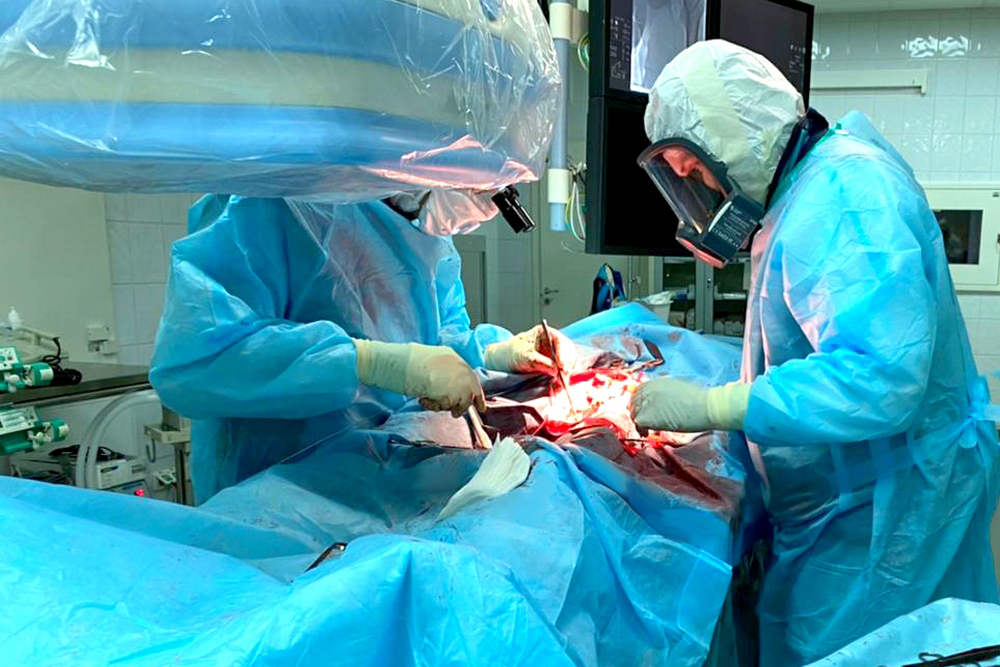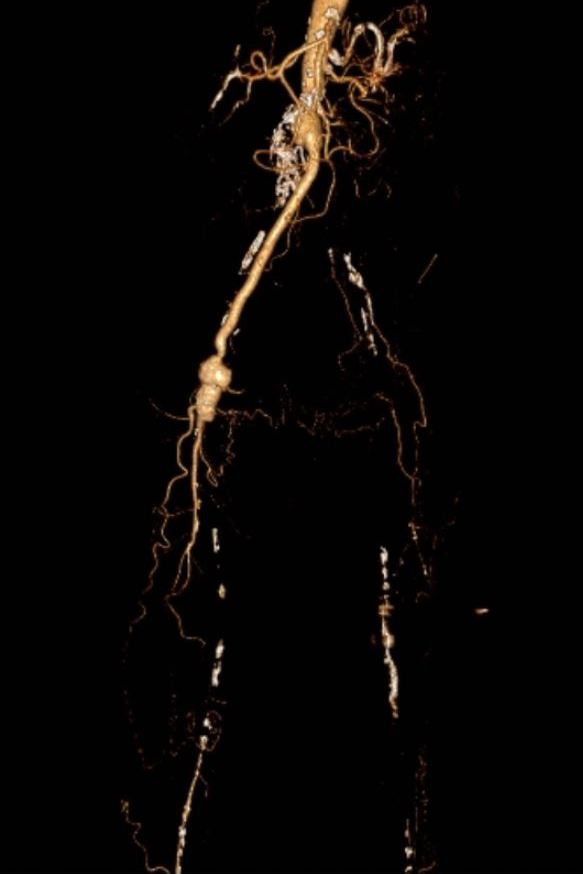
On February 11, the specialists at Almazov Centre performed a complex reconstructive surgery on an elderly patient with severe cardiovascular disease and comorbidities in the coronavirus hospital setting (Rehabilitation Clinic of Almazov Centre).
It is known that COVID-19 in patients with cardiovascular disease is associated with an aggravated course and a guarded prognosis.
Previously, the patient had repeatedly undergone reconstructive surgery on the arteries of the lower extremities, but upon admission to Almazov Centre he was diagnosed with grade IV chronic ischemia of the left lower limb. The case was aggravated by CAD with angina pectoris of the 2nd functional class. The coronary angiography showed subocclusion of the anterior descending artery (severe blood obstruction).
With standard treatment approaches, the patient remained at high risk of amputation at the hip level as well as the development of acute coronary syndrome with a high probability of an unfavorable outcome.
Today, the choice of the optimal surgical tactics in such patients remains unresolved, but more and more data appear in favour of the effectiveness and minimum injury of hybrid procedures.
In this regard and taking into account the severity of the patient’s condition, the multidisciplinary team of Almazov Centre decided to perform the percutaneous coronary intervention in the first stage and hybrid revascularization of the left lower extremity in the second stage.
The first stage involving the myocardial revascularization was performed by X-ray endovascular surgeons A. Stukovenkov and A. Mikhailov under the guidance of D. Zubarev, Head of the Department for X-ray Surgical Methods of Diagnosis and Treatment.
Hybrid surgery lasted for 7 hours. It was performed by B. Komakha, N. Susanin and V. Soloviev under the guidance of M. Chernyavsky, Head of the Research Department of Vascular and Interventional Surgery.
Postoperative angiography demonstrated successful reconstruction. Symptom regression was observed. The specialists of Almazov Centre used the approach involving hybrid revascularization of the lower extremities that was developed under the guidance of M. Chernyavsky and demonstrated high effectiveness and safety.

